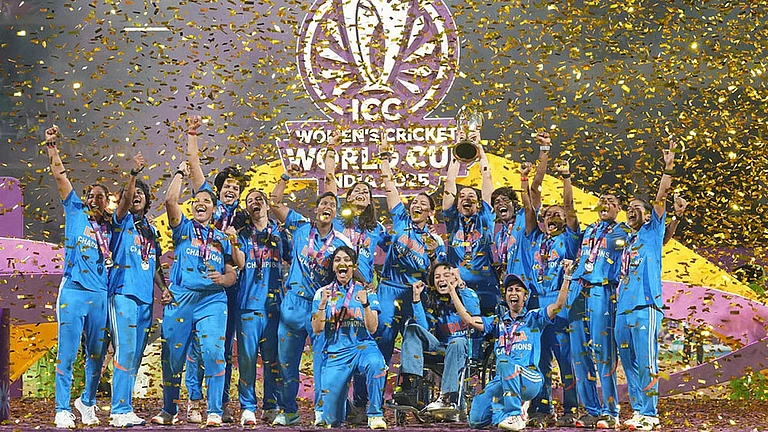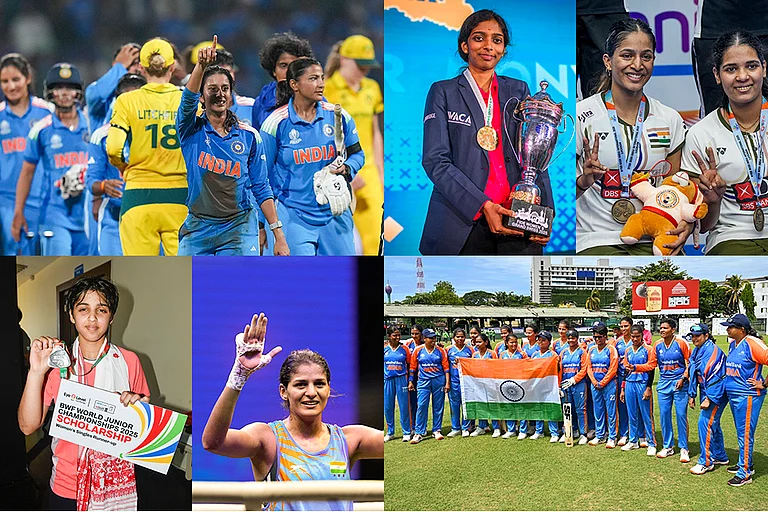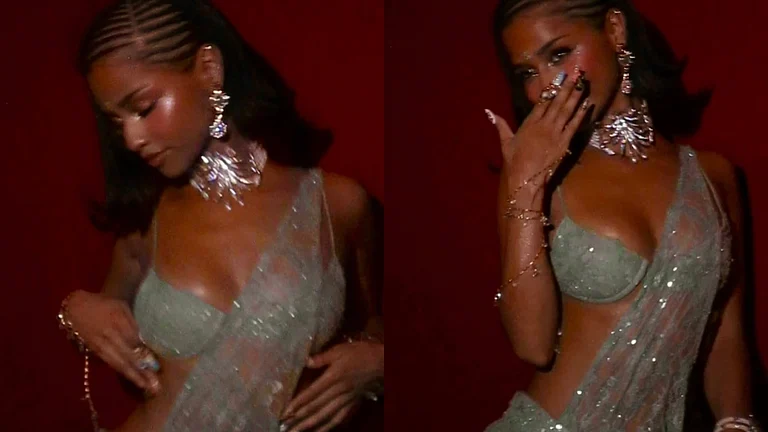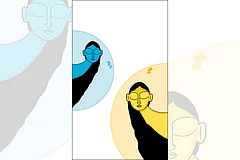More than ever before, the issue of beauty and desirability in the current appearance-conscious times presents a peculiar conundrum, especially for women. On the one hand, women who obsess with appearance, self-care, and beautification get labelled as attention seekers, flirtatious, or even dim-witted; on the other hand, women who ignore beauty labour and socially prevalent appearance expectations get branded as callous and rejected as ‘undesirable’ beings.
Even though the irony inherent in this paradox is often overlooked and denied within dominant socio-cultural discourses, one cannot disregard the relevance of the beauty ideal in the lives and identities of almost all women across almost all cultures. This is because women, perhaps since civilisation began, have been scrutinised, branded, punished, or rewarded based on how they look.
Researchers have variously called the importance of beauty the ‘aesthetic capital’ or the ‘erotic capital’ that grants women their self-worth in most hetero-patriarchal societies. Given the significance of physical appearance in what philosopher Susan Bordo prophesied to be ‘the empire of images’, it is no surprise that women who fall short of conventional beauty standards are both shamed by the world at large even as they themselves internalise a deep sense of worthlessness, self-hatred, and shame.
Undoubtedly, appearance is a prime marker of one’s identity. It is the first thing we notice about people. Embodiment, therefore, is not just a biological concept but also a socio-political one, which has, over the ages, defined, and even hierarchised various races, ethnicities, classes, genders, communities, age groups, physical abilities, and so on.
And yet, as much as appearance is an outcome of one’s genotypic characteristics over which one really has no control, it is almost always subject to socio-cultural evaluation where one is constantly expected to live up to prescriptive parameters of looking good.
Researchers have called the importance of beauty the ‘aesthetic’ or ‘erotic’ capital that grants women their self-worth in most hetero-patriarchal societies.
Be that as it may, we cannot deny that beauty ideals and beauty rituals are as old as humanity itself. From herbal face packs and bleaches used in ancient India to foot binding in China, and from Cleopatra’s legendary baths in donkey’s milk to Victorian corsets that almost left many women in a state of asphyxia, beauty rituals have historically defined womanhood in more ways than one.
Archival records across the world demonstrate that women have, over the ages, willingly undertaken elaborate and sometimes painful beauty rituals to prettify themselves. Sexual desirability and physical attractiveness have, after all, been one of the most prominent, culturally-driven aspirations for women.
In defence of the beauty ideal and the importance of conventional good looks, psychologists such as Nancy Etcoff claim that being attracted to physical beauty is hardwired into our animal instinct. After all, argues Etcoff, the peacock with the most magnificent plumage and the lion with the mightiest mane attract the best mate. Homo sapiens, likewise, asserts Etcoff, find the most youthful, the most fertile, and the strongest mate desirable. And hence, in a Darwinian social setup, women (and men) aspire to look good so as to reproduce and survive.
While such biological essentialism is largely true, what remains questionable is how the hegemony of consumerism has manipulated human imagination and instincts into appropriating concepts of beauty and desirability in certain ways.
One cannot deny the fact that since the advent of modern consumerist cultures, the beauty imperative gradually turned prescriptive so as to define embodiment in ways that suit the beauty, fashion, cosmetic, and health industries. What in the early days of consumerism was limited only to indulgence in fashion and cosmetics every once in a while has, in present times, taken hold of human imagination such that almost all women across all cultures aspire to an ideal physical form.
More importantly, this ideal form is primarily a Eurocentric one and extremely important in defining womanhood in the present times. The ideal body today is tall and slim, fair and curvaceous but athletic, has lustrous hair, and is young and able-bodied. This ideal body, which was earlier popularised through cinema, television, advertisements, print media, and billboards, is today photo-shopped, air-brushed, whitewashed, and digitally enhanced only to be rampantly circulated over the media and the internet, and is constantly available on one’s palm top.
Resultantly, this massive ‘empire of images’ that we inhabit today intrudes into the most intimate spaces of the human mind and imagination. One is reminded of ideal body standards while going to bed, upon waking up, while eating, while talking, or to put it simply, while living.
Predictably, what women see all around themselves are promises of beauty and eternal youth and subsequently false promises of a better life. Billboards popularising aesthetic surgeries, gymnasiums guaranteeing perfect bodies, beauty salons claiming body transformations, and fashion outlets assuring new and desirable identities are scattered over streets, alleys, and bylanes of rural and urban spaces alike.
From young girls to aging women, the beauty imperative holds everyone in its thrall. If such conditions give rise to body anxieties in many women, it leads others toward body dysmorphia where they imagine that their bodies are in some way abnormal. Still others succumb to eating disorders such as anorexia nervosa and bulimia nervosa; and many willingly go under the surgeon’s knife.
The beauty ideal being bombarded on women and girls compels them toward self-surveillance at the least and invasive cosmetic treatments at worst.
All in all, the beauty ideal being bombarded on women and girls from all quarters compels them toward self-surveillance at the least and invasive cosmetic treatments at worst. While many women believe that such undertakings are a matter of free choice and are empowering since they provide better-looking bodies, closer scrutiny tells us that women undertaking prescriptive beauty labour are merely experiencing an illusion of choice and empowerment. In reality, they only succumb to the dominant discourses that govern their minds and bodies.
What do such imperatives, then, mean for the average Indian girl and woman? Given that India is a tropical country, the natural body type emerging out of this geographical region has various shades of brown as skin tone, shorter heights and more voluptuous bodies compared to their Western counterparts. And yet, the aspirations toward a beautiful body often compel Indian girls and women to look as Western as possible. This has especially been a pressing need since the advent of globalisation when the neo-liberal economic forces opened the floodgates of Western cultural influences onto the Indian stage.
From issues of fashion and fitness to health, food choices and lifestyle, India was influenced by Western ideals more than ever before and body image for women (and also for men) began to be deeply impacted by the cultural dynamics that came in with the dawn of the current millennium.
The media and the internet boom that followed changed body ideals for good, and Indian women since then have been more prone to appropriate Westernised bodies and looks. This is fairly evident by the fact that Indian film actresses who till the 1990s typified the voluptuous tropical body type were gradually but surely replaced by actresses who resembled their Caucasian counterparts as much as possible.
If such massive cultural changes have engendered profound social malaises such as fat shaming, colourism, ageism, and ableism, they have compelled many women and girls to undergo tummy tucks, breast augmentation, rhinoplasty, vaginal tightening, Botox insertions, skin lightening, liposuction, and other invasive cosmetic procedures that can sometimes have dangerous and even fatal outcomes.
Presently, Indian women and girls therefore inhabit a regime where the beauty imperative leads to socially sanctioned forms of discrimination against them, and they rarely have a redressal mechanism. Be it the job market or the marriage market, dating apps or social media platforms, one is expected to live up to the ever-elusive beauty ideal. This is the dark underbelly of beauty, and Indian womanhood is often found trapped inside it.
Yes, the world has been speaking of body positivity. And, loudly at that. While this movement can be traced to the American ‘60s, it has made inroads into India as well over the last decade or so. But it is worth considering if the message of body acceptance and body positivity can truly percolate into our socio-cultural system.
Can it make microcosmic changes that truly impact the lives of an Indian woman? Sadly, many feminists, activists, and policymakers overlook the beauty imperative and appearance discrimination that governs the lives of many Indian women, perhaps owing to the frivolity associated with the issue or wanting to engage with matters that are seemingly more ‘useful’ or ‘respectable’. This is why even as we have a few films (see Dum Laga Ke Haisha), television soaps (see Mahi Way), film actresses (see Nandita Das), and social media influencers (see Sameera Reddy), India has a long way to go before it can contest the beauty bias and embrace body acceptance, especially for women.
If this ever happens, Indian women will perhaps enjoy the agency to smilingly declare what one of the first advocates of body acceptance, Naomi Wolf, once said: “We as women are trained to see ourselves as cheap imitations of fashion photographs, rather than seeing fashion photographs as cheap imitations of women.” We can only hope this will happen, sooner than later.
(Views expressed are personal)
MORE FROM THIS ISSUE
(This appeared in print as ‘Beauty’s Dark Underbelly’)



























